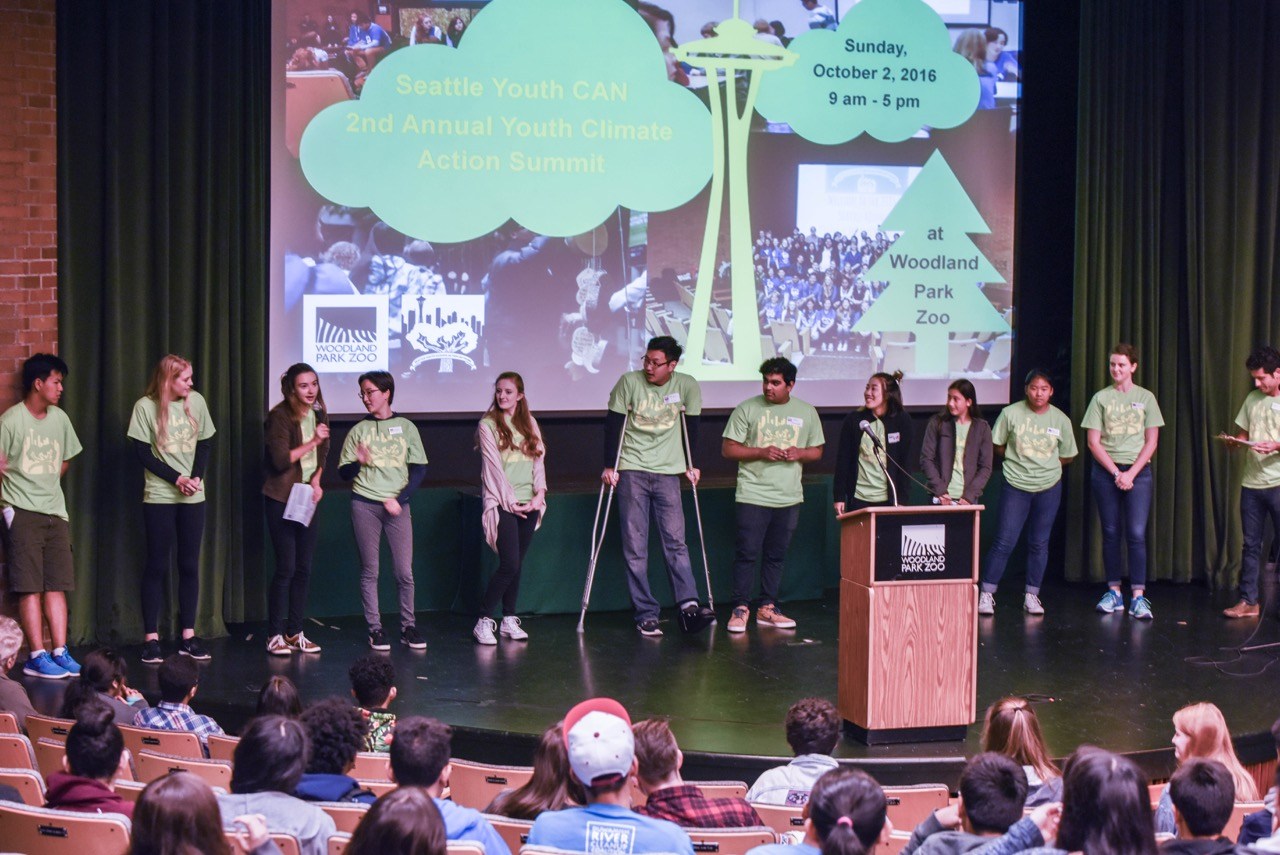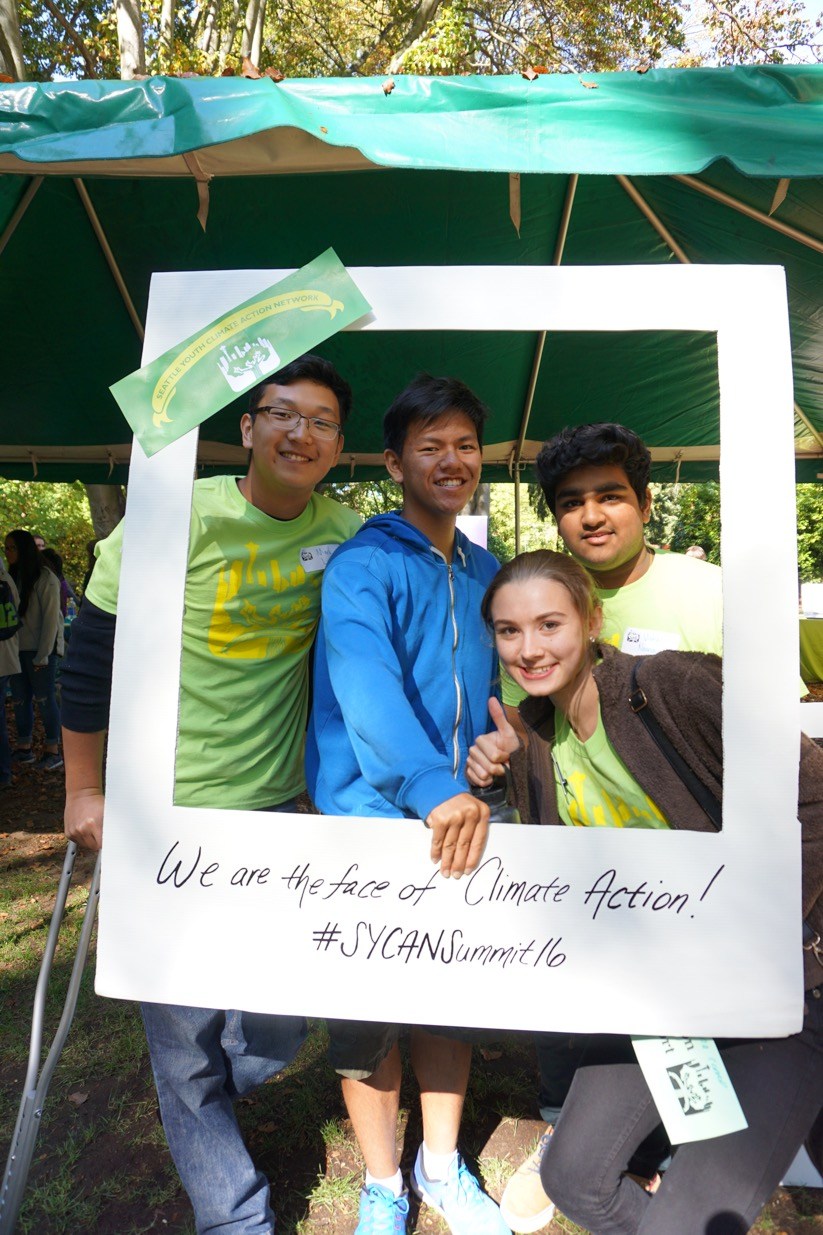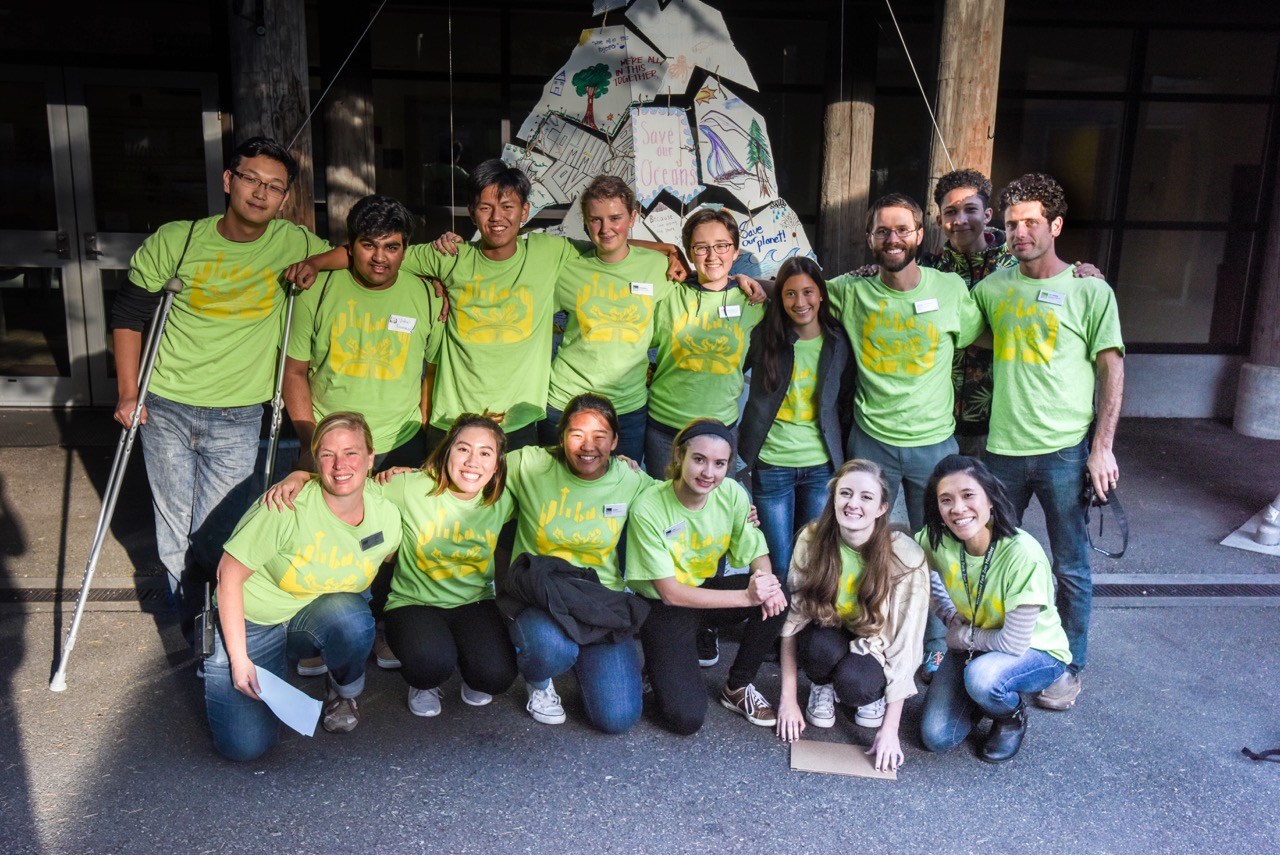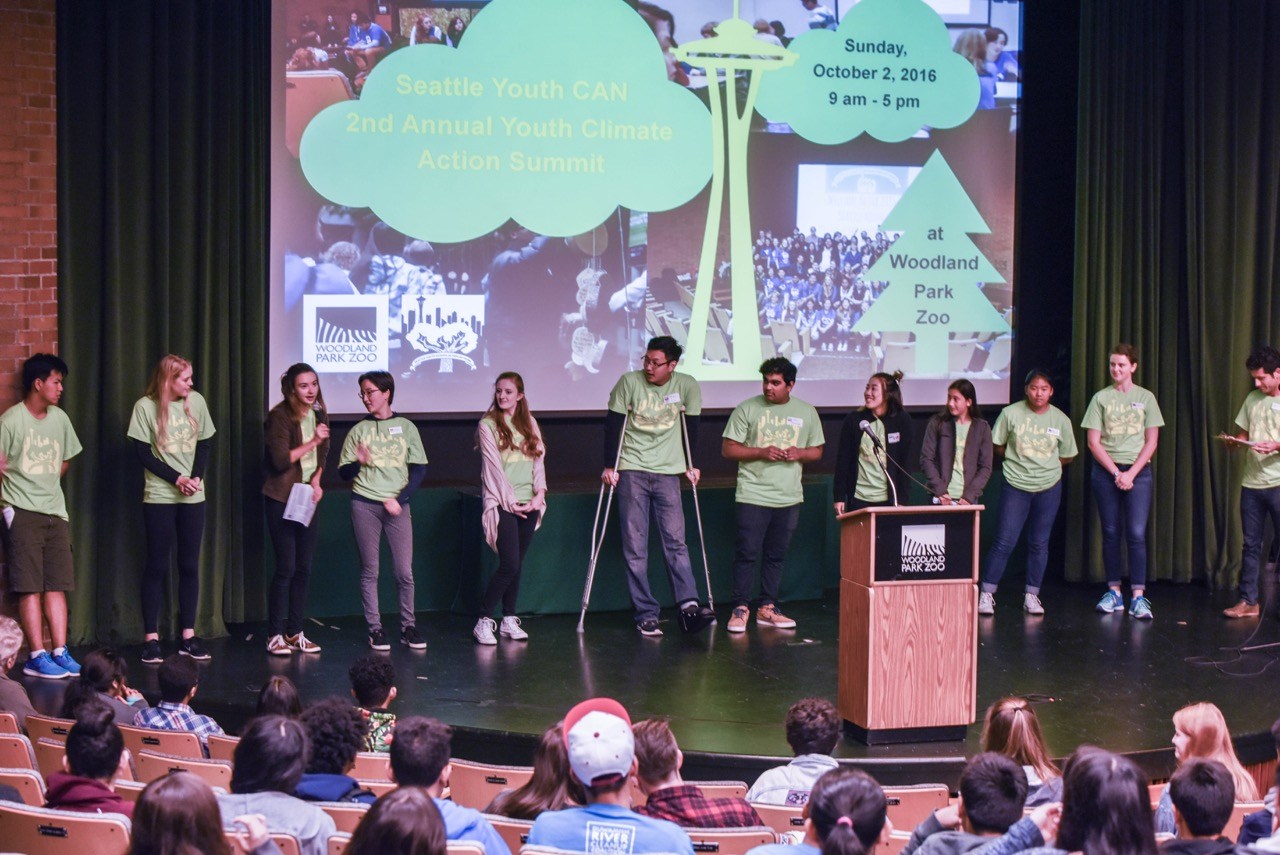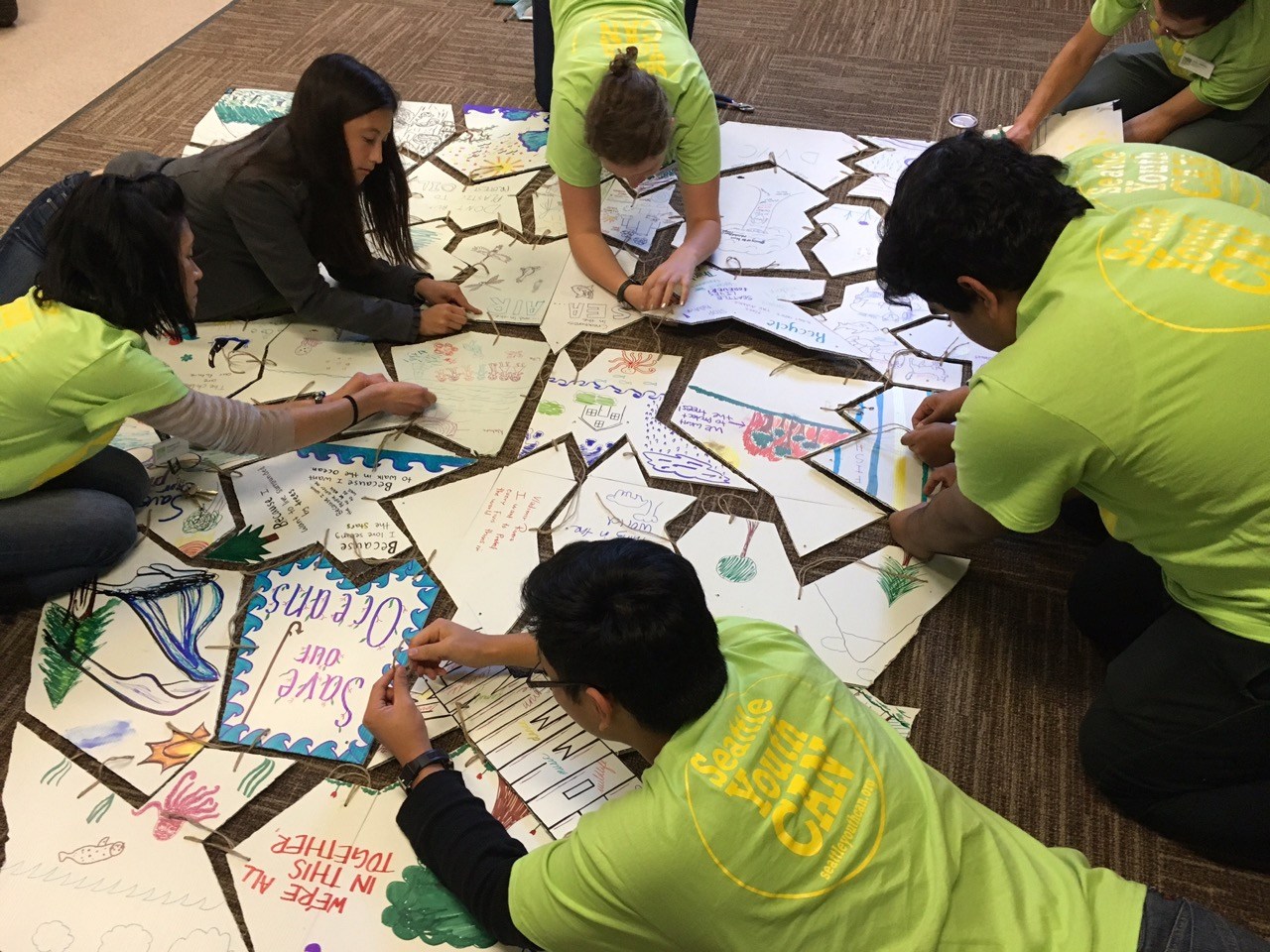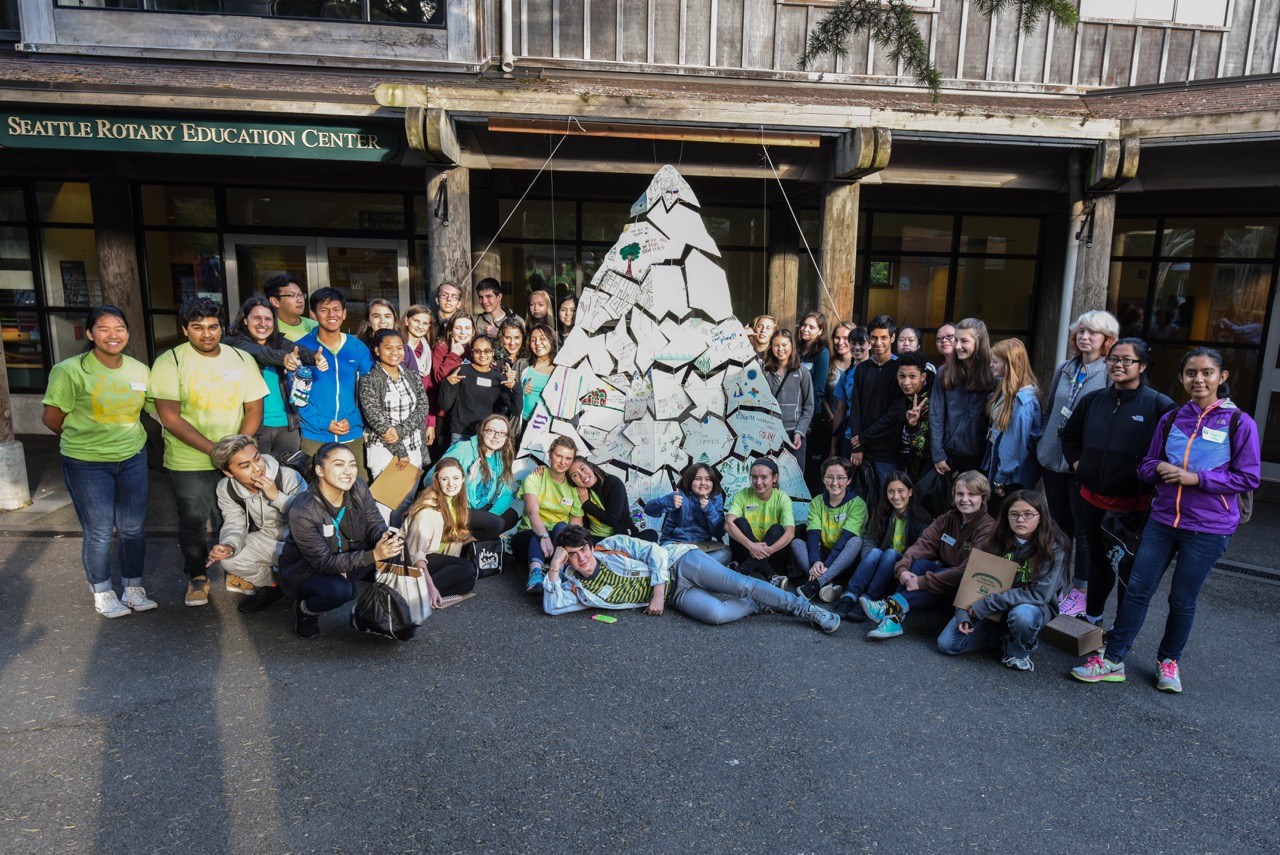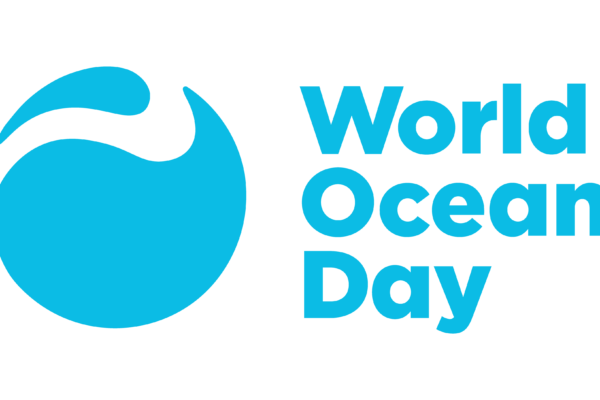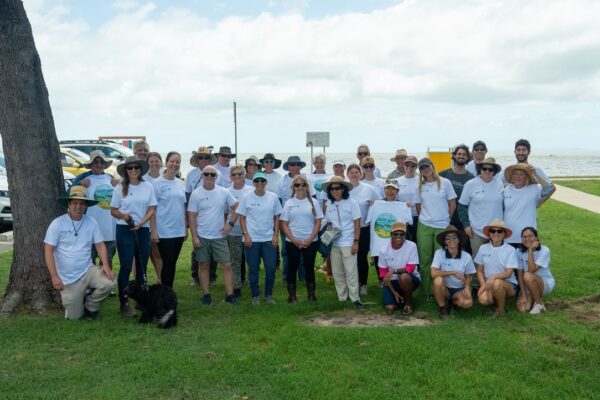This guest post by Eli Weiss of Woodland Park Zoo is the last in a 3-part series on their Innovative Solutions Grants+ project, exploring how teens in the Seattle area can empower each other and their peers for action on climate change.
When the idea of Seattle Youth Climate Action Network was hatched in the fall of 2014, inspired by conversations with teens in Woodland Park Zoo’s ZooCorps program, we were looking for a new approach to engage local youth in the zoo’s mission and connect the dots between “learn…care…act,” and decided to apply one of the major lessons from the research by The Ocean Project: youth already care and want to turn their concern into action!
With two years of support from the Innovative Solutions Grants+ Program, hundreds of teens have participated in the project, and together we have developed and tested a pilot campaign while creating and refining an innovative local network approach that has great potential for continued local growth. In fact, our experiment has blossomed into something that our institutions and local community value as a new approach to regional youth climate engagement, and we believe could serve as a model for other regions across the country!
As mentioned in our last post, our goals for this past year have been to:
- Expand the networks reach locally through outreach and more inclusive programing, and
- Build on our initial successes with the Summer Transportation Challenge and Youth Climate Action Summit.
Let me reflect on our successes and lessons learned for each of these goals as we wrap up our work under this grant.
Growing the Network
We have seen great interest in Seattle Youth CAN, and under this grant cycle alone more than 400 teens have signed up to get network updates and over 200 youth have attended one or more events since January 2016. For us this has been a great sign that there is a growing interest in Seattle Youth CAN among local teens. While some have heard about the network from peers or through other direct outreach efforts with which we have experimented, including tabling at events and broader social media presence including facebook, instagram, and twitter (See also our last post), our most successful approach was to identify and work with other youth programs where we had overlapping interests.
Echoing a finding from our ISG+ peers at the National Aquarium, we learned that these relationships take time, but they are well worth the effort. We have been working with a range of community groups and agencies, many of who are eager to deepen our partnership through this project. For some groups there was immediate interest, while others took time to find the right opportunity for collaboration. An example of the latter is the Duwamish Valley Youth Corps, an environmental youth development program in SW Seattle that we have been encouraging to join the network since our 2015 summit. This year, we had more than 20 of their youth attend our summit! Another relationship that we are excited about is with the University of Washington College of the Environment, a partnership that came about because our youth have expressed interest in increasing our focus on exploring climate related career pathways, so this past summer we co-hosted a college career panel at the UW that was attended by 50 teens and the College in turn also participated in our recent Summit.
Our advice to other zoos and aquariums? Take the time to develop relationships with other organizations who have an overlapping interest in reaching youth and advancing conservation rather than doing it alone.
An Ongoing Commitment to Youth Leadership
The creation of a Youth Leadership Committee, made up of teen leads from the zoo, aquarium, and science center - has worked out especially well. The Committee helps to make significant decisions about the direction of the project and the focus of action campaigns and events this past year. We feel confident that Seattle Youth CAN’s current direction reflects the needs and interests of Seattle-area youth. Since our launch, we have looked to our youth leaders to make major decisions impacting the focus of the network including: types of projects, the design and focus of action campaigns, and how we communicate with teens in the network. In turning over decision making to our youth leaders, we have learned that there is a fine balance between supporting youth driven ideas and having the capacity to help them be successful in their plans as I’ll describe below.
Our advice to others? Empowering youth leaders to develop public, and especially peer-to-peer, conservation engagement efforts is highly recommended and can lead to exciting new engagement strategies!
Lessons from the Transportation Challenge 2.0
For the 2016 Summer Transportation Challenge, we let our youth leaders develop the plan, which included an ambitious, and, in hindsight, overly ambitious, eight-week campaign with weekly events and social media challenges aimed at engaging other teens in fun activities and events that helped increase personal action and carbon reducing transportation choices. It all seemed great when our youth leaders formed their plans in the spring, but by mid-summer we realized that many of them didn’t have as much time as we anticipated amidst busy summer obligations to fully support the challenge. This meant that our staff were tasked with carrying out much of what was set in motion by our youth leaders.
We were expecting that an increase in the frequency of events and the length of the challenge as compared to last year would lead to many more teens getting involved. The challenge ended up with some bright spots but fell short of those expectations.
- The biggest bright spots were that the challenge had a positive impact on participants (See for example Masayuki’s blog post) and the environment, with more than 90 teens attending summer events and challenge participants logging 7,513 miles of not driven alone, which equals 3,214 pounds of CO2 saved. In addition, the continued transportation focus allowed us to expand on our partnership with a key partner, King County Metro Transit, and our teen leaders worked with the agency to develop messaging, including this video, to encourage youth to utilize public transit and make the connection between riding the bus and fighting climate change.
- As for what didn’t work, we learned that having events during the week made it hard for some teens to attend given other obligations. We were also surprised that the weekly social media contests did not lead to more participation, and how some teens in the network, even though they had developed the ideas, were not interested in posting challenge related things on their own social media channels. Lastly, we are rethinking the timing of the transportation challenge in our calendar of events, and our teen leaders are already talking about focusing on the school year, rather than the summer, in 2017, when student schedules are more predictable. And, of course, we learned that with limited time and resources, we realized the need to either limit plans or add staff to support the ambition and growth of our youth leadership and the action campaigns and events that they develop.
Our advice to others? We learned that when teen leaders are developing public engagement efforts, their enthusiasm and ideas need focus to ensure successful implementation
Summit Success
On October 2, Woodland Park Zoo hosted the 2nd Annual Youth Climate Action Summit and brought together 100 Seattle-area teens interested in fighting climate change and more than 20 climate focused community leaders. This culminating full day event was organized and led by eleven youth leaders and Woodland Park Zoo staff. And learning one of our own lessons from the Transportation Challenge, we were sure to create clear and realistic expectations for youth leadership, which lead to an event that maintained a very youth driven feel, while having enough staff support to make it all come together and run smoothly.
Youth who participated in the dynamic day of learning and action attend 39 local schools and a range of youth programs, and for 70% of attendees it was their first Seattle Youth CAN event. Having such a diverse group of youth in attendance was a direct result of both peer to peer outreach and, in particular, our newly formed partnerships with other local environmentally focused youth programs including those already mentioned above as well as Seward Park Audubon Center and YMCA Earth Service Corps.
Over the past year, we have seen Seattle Youth CAN expand from the original participants, teens already involved in programs at the zoo, aquarium, and science center, to a much broader group of youth leaders who were not already connected to one of these three institutions. This growth is exciting and through our ongoing refinement of the network we believe that the number of youth leaders participating will continue to increase in years to come. Another indicator of success for the summit and other events is that teens are having a good time and building community. Read, for example, Katherine’s recent blog post on how Seattle Youth CAN is creating a positive and fun space for teens to take climate action.
An “Action Fair" was a new addition to summit this year worth mentioning, which crated a dynamic forum for youth participants and climate focused community groups to dialogue though activities at an outdoor tabling event. Participating groups included University of Washington, Earth Games, Carbon Washington, Sierra Club, Solar Washington, Plant for the Planet, Our Children’s Trust, and 350.org Seattle. For many of these groups it was the first opportunity to interact with teens from Seattle Youth CAN and we have already begun exploring how we can work more closely with some of them in 2017. Check out the full schedule for more details on workshops, presenters, and participating community groups.
Our advice to others? Zoos and aquariums can play a critical role in developing networks of youth conservation leaders, and in this electronic age don’t underestimate the power of in-person gatherings
Measuring our Impact
We hoped that teens who participated in Seattle Youth CAN this past year would not only (1) Increase their understanding of the issue, but (2) increase participation in actions to fight climate change, and (3) that youth leaders would develop measurable leadership skills. Although our audience research team is still hard at work evaluating results from our 2016 programs, we have seen positive trends from an initial review of pre and post survey results and participant interviews to feel confident that Seattle Youth CAN is having a positive impact in these three areas. Stay tuned for a follow up report in late 2016.
Next Steps
In 2017, we are planning to form a Community Advisory Committee to ensure that we have broad support and diverse input from all of the community collaborators with whom we’ve connected over the past two years. To help with youth leadership, we are planning to add a paid youth climate fellowship opportunity, to build on the youth driven spirit of the project. Also, in an effort to help reach all youth in our region, we plan to conduct focus groups this winter with teens throughout the metropolitan area.
We are grateful for the past two years of funding from The Ocean Project’s Innovative Solutions Grants+ program, as it has allowed us to pilot this new model for local youth climate networks. We have truly valued the ongoing support and coaching from The Ocean Project’s staff and have also appreciated connecting with other recipients of the ISG+ program. We are committed to the future evolution of this work and are excited to continue to share what we’ve learned with other institutions and communities across the countries who are interested in launching their own network or youth climate action project.
If you would like to explore the idea of starting a youth climate action network in your region or are already working on a youth climate project and want to connect, please get in touch! Seattleyouthcan@zoo.org

